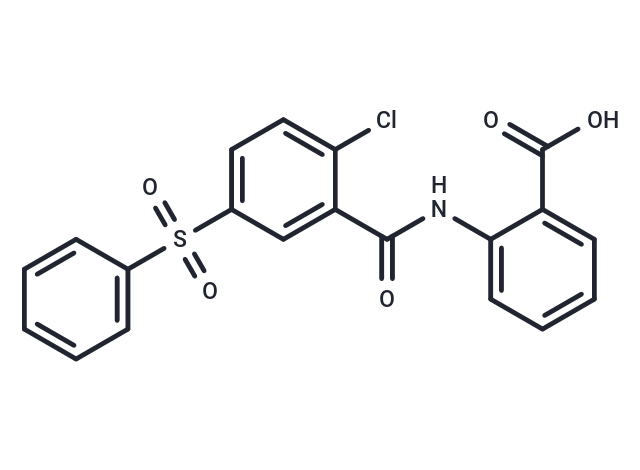Shopping Cart
- Remove All
 Your shopping cart is currently empty
Your shopping cart is currently empty

BAY-8002 is a potent dual MCT1/2 inhibitor (IC50 values are 3, 8, and 12 nM at rat (C6), human (DLD-1) and mouse (4T1) MCT1 respectively).

| Pack Size | Price | Availability | Quantity |
|---|---|---|---|
| 1 mg | $33 | In Stock | |
| 5 mg | $76 | In Stock | |
| 10 mg | $113 | In Stock | |
| 25 mg | $198 | In Stock | |
| 50 mg | $355 | In Stock | |
| 100 mg | $578 | In Stock | |
| 1 mL x 10 mM (in DMSO) | $89 | In Stock |
| Description | BAY-8002 is a potent dual MCT1/2 inhibitor (IC50 values are 3, 8, and 12 nM at rat (C6), human (DLD-1) and mouse (4T1) MCT1 respectively). |
| Targets&IC50 | MCT1:85 nM (MCT1-expressing DLD-1 cells) |
| In vitro | BAY-8002 inhibited cellular SNARF-5 fluorescence change with an IC50 of 85 nM in MCT1-expressing DLD-1 cells and displayed excellent selectivity against MCT4 (IC50 >50 μmol/L in EVSA-T cells). |
| In vivo | Raji tumor-bearing mice were treated twice daily per os with 80 and 160 mg/kg BAY-8002. BAY-8002 showed significant inhibition of tumor growth, however, no tumor regression was observed. Daudi Burkitt's lymphoma model showed some response to MCT1 inhibition, albeit not significant for BAY-8002. |
| Cell Research | Cells were seeded at 3000- 6000 cells per well in a 90 μl volume in 96-well plates. Triplicates were treated in a dose range of 0-10 μmol/L. Cells were continuously exposed to the drug at 37°C and 5 % CO2. After 72 h, cell viability was measured using the CellTiter Glo cell viability assay. For the generation of resistant cell lines, cells were treated at IC50 and upon regrowth treated with increasing concentrations of the drug. |
| Animal Research | For in vivo studies, tumor cells were subcutaneously (s.c.) injected in 0.1 ml suspension to the left flank of 7-10 weeks old immunocompromised female mice (3 x 10^6 Raji cells in 10% Matrigel) to NOD SCID mice, 2 x 10^6 Colo320DM cells in 50% MatrigelTM to NMRI nu/nu mice, 3 x 10^6 WSU-DLCL2 cells or 1 x 10^7 Daudi cells in 50% MatrigelTM to CB17 SCID mice. Tumor area (length x width) and body weight was determined at least twice weekly. Tumors were allowed to establish before mice were allocated to different treatment and control groups by stratified randomization based on their primary tumor size. Oral treatments (p.o.) via gavage were performed as indicated. Final tumor weights were determined at the end of each study. For statistical analysis of tumor area as well as final tumor weights, data were analyzed using one-way ANOVA followed by Tukey's multiple comparisons test. |
| Alias | BAY8002, BAY 8002 |
| Molecular Weight | 415.85 |
| Formula | C20H14ClNO5S |
| Cas No. | 724440-27-1 |
| Smiles | OC(=O)c1ccccc1NC(=O)c1cc(ccc1Cl)S(=O)(=O)c1ccccc1 |
| Relative Density. | no data available |
| Storage | Powder: -20°C for 3 years | In solvent: -80°C for 1 year | Shipping with blue ice. | |||||||||||||||||||||||||||||||||||
| Solubility Information | DMSO: 50 mg/mL (120.24 mM), Sonication is recommended. | |||||||||||||||||||||||||||||||||||
Solution Preparation Table | ||||||||||||||||||||||||||||||||||||
DMSO
| ||||||||||||||||||||||||||||||||||||

Copyright © 2015-2025 TargetMol Chemicals Inc. All Rights Reserved.